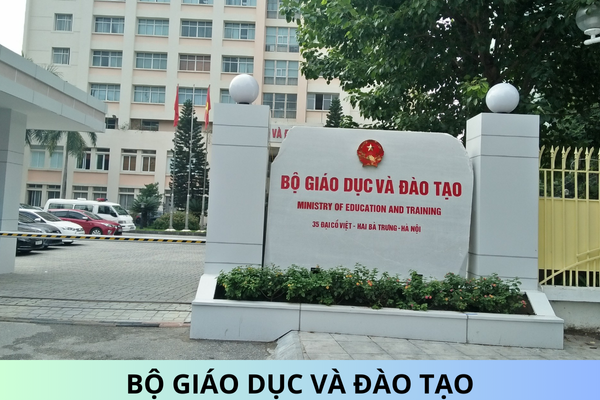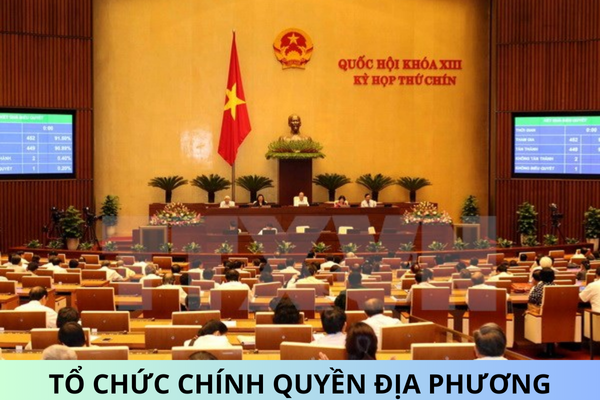What is the 2023 collective review report form in Vietnam?
What is the 2023 collective review report form in Vietnam? Which groups are subject to year-end review in Vietnam? - Question from Mr. Hung (Yen Bai).
What is the 2023 collective review report form in Vietnam?
In Instruction 25-HD/BTCTW for 2023, there is a sample year-end collective review report prescribed as follows:
|
PARTY COMMITTEE …. … (Collective review) |
COMMUNIST PARTY OF VIETNAM |
|
…., date…. year….. |
COLLECTIVE REVIEW REPORT
Year…
Based on the results of leadership and direction in implementing political tasks in the locality (agency, unit); Collective ........ review with the following main contents:
I. Advantages and results achieved
1. Compliance with organizational and operational principles, especially the principle of democratic centralism; Implement working regulations.
Self-assessment of performance level:
|
□ Excellent |
□ Good |
□ Average |
□ Poor |
2. Results of implementing goals, targets, and tasks set out in congress resolutions, plans, and annual work programs assigned and approved by competent authorities.
Self-assessment of performance level:
|
□ Excellent |
□ Good |
□ Average |
□ Poor |
3. Work on building and rectifying the Party and political system; responsibility to set an example; accountability; The work of fighting against corruption, negativity, waste and preventing and repelling manifestations of deterioration in political ideology, ethics, lifestyle, "self-evolution", "self-transformation" in internally associated with studying and following Ho Chi Minh's ideology, ethics, and style; inspection, supervision, party discipline and settlement of complaints, denunciations, recommendations and feedback from organizations and individuals.
Self-assessment of performance level:
|
□ Excellent |
□ Good |
□ Average |
□ Poor |
4. Responsibilities of collective leadership and management in carrying out political tasks of localities, organizations, agencies and units.
Self-assessment of performance level:
|
□ Excellent |
□ Good |
□ Average |
□ Poor |
II. Limitations, shortcomings and causes
- Limitations and shortcomings.
- Causes of limitations and shortcomings.
III. Results of overcoming limitations and shortcomings concluded by competent authorities or pointed out in previous reviews
Clearly review each limitation and defect (has been overcome; is being overcome, level of correction; has not been overcome); difficulties and problems (if any); responsibilities of relevant collectives and individuals.
Self-assessment of performance level:
|
□ Excellent |
□ Good |
□ Average |
□ Poor |
IV. Explanation of issues suggested for review (if any)
Explain each issue suggested for review, state the cause, and determine the responsibility of the collective and individual for each issue suggested for review.
V. Responsibilities of collectives and individuals
Regarding limitations and shortcomings in performing political tasks; democratic centralism; working regulations and regulations; organizational and staff work; party member management; innovate leadership methods; measures to prevent and combat corruption, negativity and waste; Results of handling violations for groups and individuals...
VI. Directions and measures to overcome limitations and shortcomings
VII. Suggested quality rating:
□ Complete the task excellently
□ Complete the task well
□ Complete the mission
□ Not completing the task
|
on behalf of COLLECTIVE LEADERSHIP AND MANAGEMENT |

What is the 2023 collective review report form in Vietnam? (Image from the Internet)
Which groups are subject to year-end review in Vietnam?
In Article 5 of Regulation 124-QD/TW 2023, the year-end collective review includes the following groups:
For Central:
- Politburo, Party Central Committee Secretariat.
- The Standing Committee of the Party Committee under the Central Government, the Party Youth Union, the Party Committee, and the collective leadership of the Party Committees at the Central Committee.
- Standing collective of the Nationalities Council; Standing Committees of the National Assembly, collective leaders of agencies under the Standing Committee of the National Assembly.
- Leadership team:
+ Office of the President, Office of the Government, Office of the National Assembly.
+ Central business units (Nhan Dan Newspaper, Communist Magazine, Voice of Vietnam, Vietnam Television, Vietnam News Agency, Ho Chi Minh National Academy of Politics, Academy Vietnam Social Sciences, Vietnam Academy of Science and Technology, Hanoi National University, Ho Chi Minh City National University, National Political Publishing House - Truth).
+ Agencies and units of the Party, State, Fatherland Front and socio-political organizations at the Central level.
+ Economic groups, state corporations, state enterprises.
- Other leadership and management collectives in departments, ministries and branches are regulated by party committees, party unions and party committees directly under the Central Government.
For local:
- Standing Committees of Party Committees at provincial, district and equivalent levels; grassroots party committees; Party unions, party committees, collective leaders of specialized agencies advising and assisting the provincial and district party committees.
- Other leadership and management collectives at the provincial, district and grassroots levels are prescribed by the provincial Party Committee and centrally run city Party Committee.
What are steps to evaluate and classify annual quality for groups and individuals in Vietnam?
Article 11 of Regulation 124-QD/TW 2023 stipulates methods, processes, and collective review assessment as follows:
Methods and procedures for evaluation and ranking
...
2. The annual quality assessment and ranking for groups and individuals is carried out in 3 steps:
- Step 1: Collectives and individuals self-assess and classify.
Based on the classification criteria, each organization, group, and individual analyzes the quality and ranks it into 1 of 4 levels as prescribed in Article 12.
- Step 2: Appraise and propose a rating level.
Based on the results of self-assessment and ranking of groups and individuals and the participation of relevant agencies, the advisory agency on the organization of staff appraisals and proposes quality ratings. .
- Step 3: The competent authority decides on quality classification.
For groups and individuals, after receiving the results of quality assessment and ranking, if there are applications, letters of complaints or denunciations, there are signs of violation of party discipline, State law, or internal disunity. The superior party committee directly directs the inspection, verification, appraisal, and review of the assessment and classification results.
...
Thus, the steps for annual quality assessment and ranking for groups and individuals in Vietnam are as follows:
- Step 1: Collectives and individuals self-assess and classify.
Based on the classification criteria, each organization, group, and individual analyzes the quality and ranks it into 1 of 4 levels:
+ Complete the task excellently
+ Complete the task well
+ Complete the mission
+ Do not complete the task
- Step 2: Appraise and propose a rating level.
The advisory agency on staff organization evaluates and proposes quality ratings based on the results of self-assessment, ratings of groups and individuals and opinions of relevant agencies.
- Step 3: The competent authority decides on quality classification.
For groups and individuals, after receiving the results of quality assessment and ranking, if there are applications, letters of complaints or denunciations, there are signs of violation of party discipline, State law, or internal disunity. The superior party committee directly directs the inspection, verification, appraisal, and review of the assessment and classification results.
Best regards!










